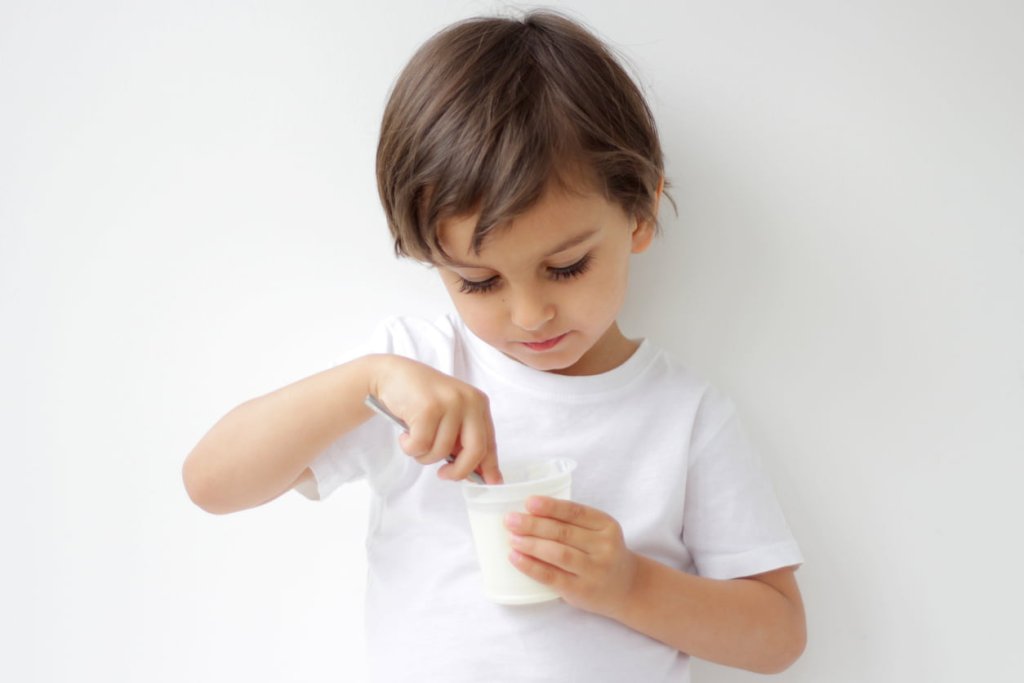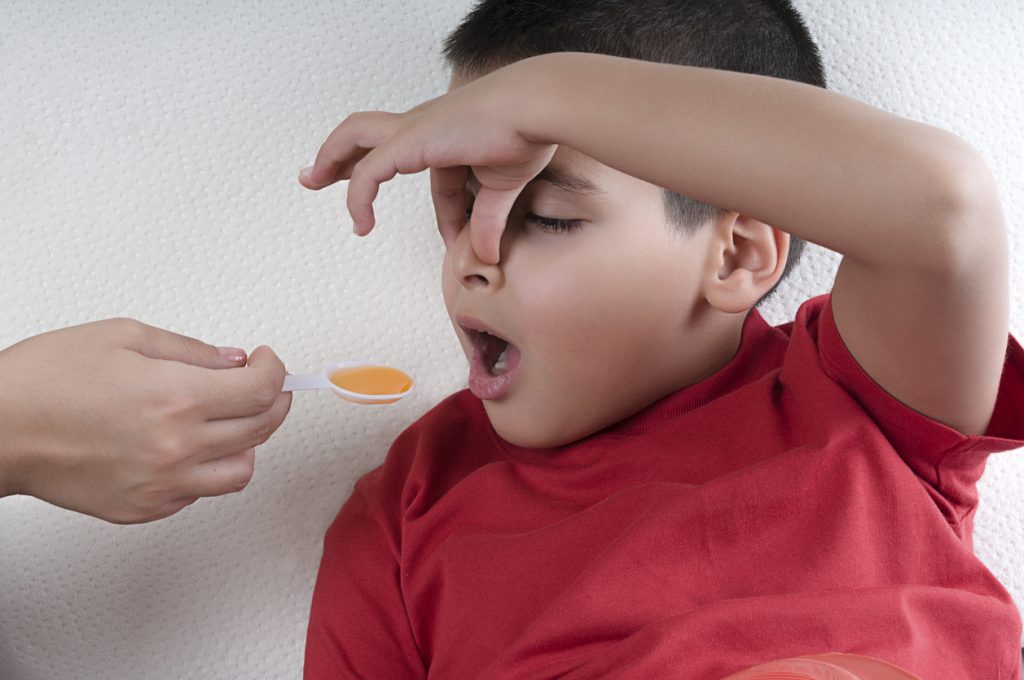In this blog for trainee doctors, paediatrician and Cochrane Fellow Rufaro Ndokera looks at the Cochrane evidenceCochrane Reviews are systematic reviews. In systematic reviews we search for and summarize studies that answer a specific research question (e.g. is paracetamol effective and safe for treating back pain?). The studies are identified, assessed, and summarized by using a systematic and predefined approach. They inform recommendations for healthcare and research. on recurrent abdominal pain in children.
Page last updated: 30 June 2023.
Let us start with a little quiz. Up to 25% of children do what? Injure themselves at school? Have more than 10 spoons worth of sugar a day? Don’t know how to ride a bike?
25% is a lot of children, 1 in 4, and yet studies suggest that between 4 and 25% of children suffer from recurrent abdominal pain (which I am sure you guessed from the title).
As far as we currently understand it, and has been used as the diagnostic criteria within the following reviews, recurrent abdominal pain is pain that has no other identifiable or diagnosed cause. Is constipation giving your patient trouble? Not recurrent abdominal pain. Coeliac disease diagnosed giving your child a sore tummy? Not recurrent abdominal pain.
The criteria used to diagnose recurrent abdominal pain are in ROME III. It is, however, a diagnosis of exclusion once all other serious and important conditions have been ruled out.
Recurrent abdominal pain can be a significant problem for the children it affects and for the family that surrounds them. Days missed from school and parental days off work can have a significant impact.
Children with recurrent abdominal pain are seen often and in various places, primary and secondary care, which means a wide variety of healthcare professionals would be very keen to know how we can help these children. Parents have often tried everything they can think of prior to going to the doctor and then, sadly, we have little to offer.
The following Cochrane ReviewsCochrane Reviews are systematic reviews. In systematic reviews we search for and summarize studies that answer a specific research question (e.g. is paracetamol effective and safe for treating back pain?). The studies are identified, assessed, and summarized by using a systematic and predefined approach. They inform recommendations for healthcare and research. have looked at the common approaches to recurrent abdominal pain in an attempt to assess their effectivenessThe ability of an intervention (for example a drug, surgery, or exercise) to produce a desired effect, such as reduce symptoms..
Let’s go:

Dietary interventions for recurrent abdominal pain
The review Dietary interventions for recurrent abdominal pain in childhood looks at dietary changes and their effects on improving recurrent abdominal pain.
What dietary interventions did they look at?
Of the 19 included studies, the main themes of dietary treatmentSomething done with the aim of improving health or relieving suffering. For example, medicines, surgery, psychological and physical therapies, diet and exercise changes. included the use of probiotics, high fibre diet, low FODMAP diets (certain subtypes of carbohydrate) and fructose restricted diet.
What did it say?
From six studies, there was low-quality evidence that children treated with probiotics had less pain intensity and frequency than those treated with placeboAn intervention that appears to be the same as that which is being assessed but does not have the active component. For example, a placebo could be a tablet made of sugar, compared with a tablet containing a medicine., up to three months. Looking specifically at children in the irritable bowel subset, again, probiotics appeared to have a positive effect in four studies with moderate-quality evidence.
When considering high fibre, two studies demonstrated no change in pain frequency or intensity but again with low-quality evidence.
Unfortunately, there was only one studyAn investigation of a healthcare problem. There are different types of studies used to answer research questions, for example randomised controlled trials or observational studies. each for low FODMAP diets and low fructose diets and so the authors were unable to pool any results.
Probiotics
Another review Probiotics for management of functional abdominal pain disorders in children has specifically focused on the potential benefits and side effects of probiotics and synbiotics (a mixture of probiotics and prebiotics).
The authors found that probiotics and synbiotics may be more effective than placebo in achieving treatment success, but the evidence is of low certainty. There may be little to no difference between probiotics or synbiotics and placebo in achieving complete resolution of pain. The authors were unable to draw meaningful conclusions about the impact of probiotics or synbiotics on the frequency and severity of pain as the evidence was all of very low certainty.
The available evidence on potential side effects was very low certainty but there were no reported cases of severe unwanted effects.
So, for diet and probiotics what are we saying?
Well, all the details we have are based on low to moderate-quality evidence so it is difficult to put too much weight on them. What we can say is that probiotics may be beneficial in recurrent abdominal pain and probably particularly have an effect in those with the IBS subtype of pain. High-quality studies on this need to be done to establish if these findings persist and if the reported improvements in pain scores are clinically importantClinical significance is the practical importance of an effect (e.g. a reduction in symptoms); whether it has a real genuine, palpable, noticeable effect on daily life. It is not the same as statistical significance. For instance, showing that a drug lowered the heart rate by an average of 1 beat per minute would not be clinically significant, as it is unlikely to be a big enough effect to be important to patients and healthcare providers..
We will also need to look at fructose and FODMAP diets more before we can make any judgement, since at this time there is only one study available on each of these approaches.

Pharmacological interventions for recurrent abdominal pain
This next review Pharmacological interventions for recurrent abdominal pain in childhood looks at medications which could improve the symptoms for children with recurrent abdominal pain. Over many years many things have been tried but what really works?
What pharmacological interventions did they look at?
The list of the various medications within this review is long… very long. It appears that at some point or another a wide range of drugs in various therapeutic classes have been investigated in randomizedRandomization is the process of randomly dividing into groups the people taking part in a trial. One group (the intervention group) will be given the intervention being tested (for example a drug, surgery, or exercise) and compared with a group which does not receive the intervention (the control group). controlled trialsA trial in which a group (the ‘intervention group’) is given a intervention being tested (for example a drug, surgery, or exercise) is compared with a group which does not receive the intervention (the ‘control group’).. These range from antispasmodics to antidepressants, antibiotics to antihistamines. Overall, the quality of evidenceThe certainty (or quality) of evidence is the extent to which we can be confident that what the research tells us about a particular treatment effect is likely to be accurate. Concerns about factors such as bias can reduce the certainty of the evidence. Evidence may be of high certainty; moderate certainty; low certainty or very-low certainty. Cochrane has adopted the GRADE approach (Grading of Recommendations Assessment, Development and Evaluation) for assessing certainty (or quality) of evidence. Find out more here: https://training.cochrane.org/grade-approach was low or very low. Although some individual studies reported a positive effect, the authors felt that the confidence they could have in those results was limited. So, unfortunately, regarding medication, we are no further forward. The evidence is of low quality and sparse, meaning that uncertainty remains about what positive impact medications could make.
This was further reinforced by another review specifically looking at antidepressants for functional abdominal pain disorders in children and adolescents’. The bottom line is that we need more, reliable evidence about the possible benefits and harms of antidepressants in this context.

Psychosocial interventions for recurrent abdominal pain in children
There are multiple psychosocial approaches that can be used in children with a wide variety of illnesses. In recurrent abdominal pain, as with many pain disorders, it is felt that psychogenic factors may significantly contribute to the experience of pain. As such, the review Psychosocial interventions for recurrent abdominal pain in childhood looks to see if any of these interventions might help children with recurrent abdominal pain.
What did they look at?
As a doctor, my understanding of how psychosocial interventions work and, exactly what is involved, is limited. As it is not my area of expertise, as much for my own benefit as yours, I thought I would lay some of it out here.
With regard to the specific psychological and behavioural interventions looked at within this review, they included cognitive behavioural therapy (CBT), hypnosis, guided imagery and written self-disclosure. CBT was considered in multiple formats and delivery methods (affected child therapy vs. family therapy/ group vs. individual/face-to-face vs. remote). Hypnosis, again in group and individual settings was explored. Guided imagery is similar to hypnosis, using deep relaxation and encouragement to use creative thought and finally, during written self-disclosure participants write down thoughts and feelings in a quiet space with no follow-up or discussion. Yoga was also included.
What did they find?
Not all of the individual studies will have measured the primary outcomeOutcomes are measures of health (for example quality of life, pain, blood sugar levels) that can be used to assess the effectiveness and safety of a treatment or other intervention (for example a drug, surgery, or exercise). In research, the outcomes considered most important are ‘primary outcomes’ and those considered less important are ‘secondary outcomes’. using the same scale. Therefore, ‘treatment success’ has been defined within each individual trialClinical trials are research studies involving people who use healthcare services. They often compare a new or different treatment with the best treatment currently available. This is to test whether the new or different treatment is safe, effective and any better than what is currently used. No matter how promising a new treatment may appear during tests in a laboratory, it must go through clinical trials before its benefits and risks can really be known.. Authors of the review have commented that this ‘could be a complete absence of pain post-intervention or reduction in pain according to a pre-defined threshold’.
For CBT, very low-quality evidence suggests that CBT may have treatment success in children in the short term but that this effect may not persist at medium- or long-term follow-up.
For hypnotherapy and guided imagery, low-quality evidence suggested there may be treatment success, may be a reduction in pain frequency and may be a reduction in pain intensity. One study suggested that these improvements may be sustained for up to 5 years.
For yoga and written self-disclosure, there may be no evidence of a difference between the placebo and control group.
It is important to remember that for psychosocial interventions in this review, all evidence was based on low or very low-quality evidence making our confidence in the ‘truth’ of the findings limited. We remain uncertain of the presence or extent of any true effect.
So in clinic, I do….
So what do we do? What do I/we tell patients and parents and families when they just can’t manage their child’s recurrent pain?
Unfortunately, this series of reviews hasn’t provided a firm answer. The research that is out there is of low quality and this affects the certainty we have in the findings.
So, for a condition that can affect up to 1 in 4 children, we continue to make educated estimations of what is likely to help. Probiotics? Maybe. Hypnotherapy? Possibly, but we can’t be sure. For now, we will have to take each child as they come and manage as best we can until high-quality research on such an important topic becomes available.
Rufaro Ndokera has nothing to disclose.


